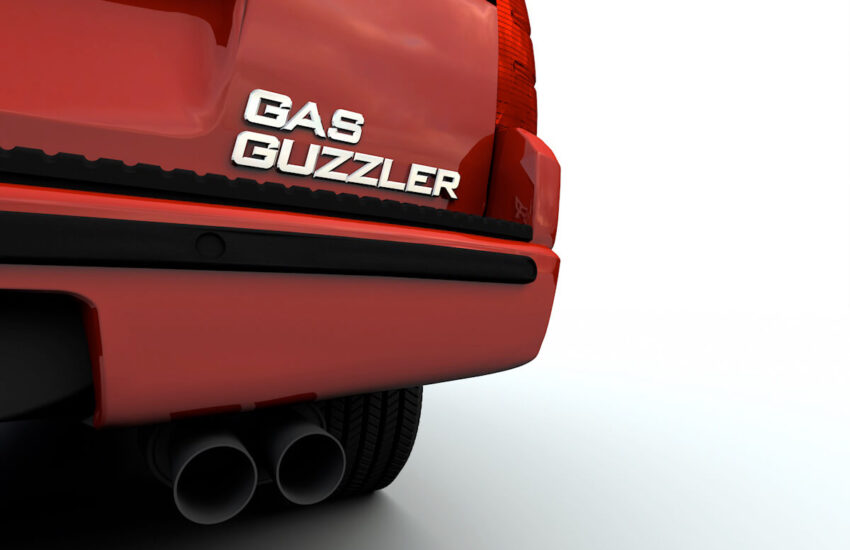As the world moves towards a greener future, the automotive industry faces significant challenges, particularly concerning high-consumption vehicles, popularly known as “gas guzzlers.” These vehicles, renowned for their power and size, are often less fuel-efficient, leading to higher carbon dioxide emissions. The Environmental Protection Agency (EPA) has been instrumental in steering the industry towards sustainability by finalizing new federal greenhouse gas (GHG) emissions standards for passenger cars and light trucks for model years 2023 through 2026.
With a corporate average fuel economy (CAFE) target of 55 miles per gallon for model year 2026 vehicles, automakers are under pressure to innovate and adapt. This target is ambitious, especially considering the current lineup of gas guzzlers from various automakers, including Mercedes-Benz’s G-Class AMG and the Ram 1500 TRX, which hover around the 11 to 15 MPG range.
Automaker Strategies for Adhering to Emissions Standards
Electrification of Fleet:
Auto manufacturers are increasingly investing in electric vehicle (EV) technology. The electrification of their fleet allows them to offset the lower fuel efficiency of their gas guzzlers, thus meeting the CAFE targets through averages.
Hybridization:
For those not ready to go fully electric, hybrid vehicles offer a middle ground, combining internal combustion engines with electric power to increase fuel efficiency and reduce emissions.
Engine Efficiency Improvements:
Automakers are continually developing more efficient combustion engines. Through advanced technologies like turbocharging and direct injection, engines become more efficient without sacrificing performance.
Lightweight Materials:
Reducing vehicle weight is another effective strategy. Using materials like aluminum and carbon fiber, manufacturers can significantly improve fuel economy.
Aerodynamic Design:
Improvements in vehicle design to reduce drag can also contribute to better fuel efficiency. Aerodynamic vehicles require less energy to overcome air resistance, thus consuming less fuel.
Advanced Fuel Technologies:
Exploring alternative fuels that burn cleaner than traditional gasoline, such as hydrogen or advanced biofuels, can help to reduce the carbon footprint of gas guzzlers.
Emissions Trading:
Some automakers might engage in emissions trading, where they purchase credits from other companies that produce vehicles exceeding the standards.
The Top Gas Guzzlers Sold Today
The automotive landscape today still features a number of vehicles known for their formidable engines and luxurious amenities, yet they carry the notoriety of being top gas guzzlers. Among them, the Mercedes-Benz G-Class AMG stands out with its rugged off-road capabilities coupled with luxury, achieving only 11 MPG. The Ram 1500 TRX follows, a powerhouse in the pickup segment, with a 12 MPG rating that speaks to its performance pedigree. SUVs like the Cadillac Escalade and the Jeep Wrangler Rubicon offer spacious interiors and commanding road presence, but with fuel economies in the low teens, they represent a category of vehicles that enthusiasts love, but environmentalists fret over. Even sporty models like the Porsche 911 GT3 and the BMW X5 M, despite their advanced engineering, cannot escape the gas guzzler label with their MPG ratings peaking at 15. As these vehicles continue to fulfill the demand for high-performance and luxury, they pose a challenge in the automotive industry’s march towards greater fuel efficiency and lower emissions.
| Make | Combined MPG |
| Mercedes-Benz G-Class AMG-G-63-4×4-Squared-SUV | 11 |
| Ram 1500 TRX-4×4-Crew-Cab-57-Box | 12 |
| Dodge Durango SRT-Hellcat-AWD | 13 |
| Cadillac Escalade AWD-4dr-V-Series | 13 |
| Jeep Wrangler Rubicon-392-4-Door-4×4 | 14 |
| BMW XM Sports-Activity-Vehicle | 14 |
| Porsche 911 GT3-Coupe-Touring-Package | 15 |
| Nissan Armada 4×4-SV | 15 |
| Dodge Charger SRT-Hellcat-Widebody-Jailbreak-RWD | 15 |
| Chevrolet Corvette 2dr-Z06-Cpe-2LZ | 15 |
| Cadillac CT5-V 4dr-Sdn-Blackwing | 15 |
| Jeep Grand Wagoneer 4×4 | 15 |
| INFINITI QX80 PREMIUM-SELECT-AWD | 15 |
| Audi R8 Coupe V10-performance-quattro | 15 |
| GMC Sierra 1500 4WD-Crew-Cab-147-AT4X | 15 |
| Chevrolet Silverado 1500 4WD-Crew-Cab-147-ZR2 | 15 |
| BMW X5 M Competition-AWD | 15 |
| BMW X6 M Sports-Activity-Coupe | 15 |
| Ford Bronco Raptor-4-Door-Advanced-4×4 | 15 |
The Road Ahead
The push for greener vehicles comes at a critical time. Climate change and environmental degradation are pressing issues, and the transportation sector is one of the largest contributors to greenhouse gas emissions. The updated EPA standards signify a strong move towards mitigating this impact, and automakers must rise to the challenge.
While the allure of high-performance, low-efficiency vehicles remains for a segment of consumers, automakers are tasked with balancing these demands with environmental responsibility. Innovations in technology and design will be pivotal in achieving this balance.
As we advance, we can expect to see a more diverse offering of vehicles that cater to performance enthusiasts and eco-conscious consumers alike. The shift won’t happen overnight, but with each model year, the industry takes a step closer to a sustainable future, proving that high performance doesn’t have to come at the expense of the planet.
AutoByPayment.com offers accurate estimates of new and used car loan payments based on self-selected credit score, current rebates, down payment, and trade equity or negative equity, without customers having to provide their personal identifying information such as email and phone.
